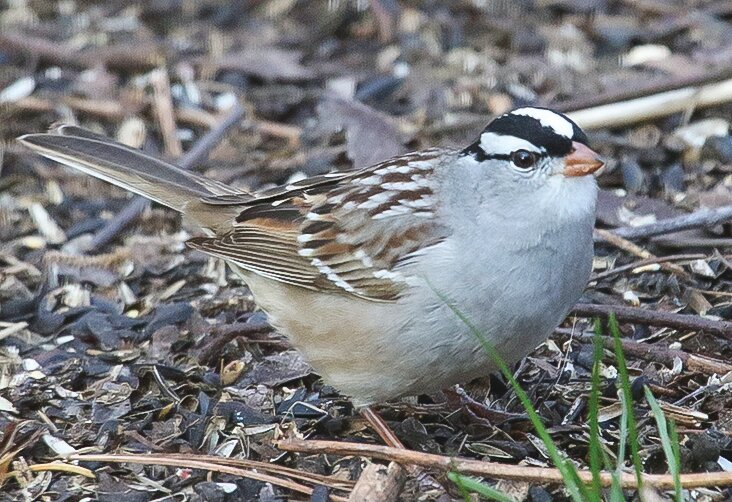Support the Timberjay by making a donation.
A white-crowned sparrow seems content to stay
Bird migration is always an interesting time for those of us who like to observe the natural world, in part because you never know who will show up and how long they’ll stick around. Most …
This item is available in full to subscribers.
Attention subscribers
To continue reading, you will need to either log in to your subscriber account, below, or purchase a new subscription.
Please log in to continue |
A white-crowned sparrow seems content to stay
Bird migration is always an interesting time for those of us who like to observe the natural world, in part because you never know who will show up and how long they’ll stick around.
Most migrants that are headed north of our region tend to stay only a few days, so I was surprised this spring when a white-crowned sparrow became a regular under our bird feeder for at least three weeks beginning about mid-April.
I see them most years during migration, but typically only a few days at most as they pass through on their way to northern Canada, where they breed on the tundra or in low shrubs on the northern edges of the forest. This was the first time I could recall seeing one (and I’m quite sure it was the same bird) virtually set up shop in the yard for a period of weeks, and it has lingered to the point where I’ve begun to wonder if it was just going to stay all summer.
While this is one of our largest sparrows, it can be easy to overlook, in part because it could be easily mistaken for one of the North Country’s most common summer birds— the white-throated sparrow— many of which sport a very similar black-and-white striped head.
The white-crowned sparrow, however, lacks the yellow eye spot and the bright white chin of the white-throated sparrow. While the white-crowned is also slightly larger on average, there’s probably enough variability that this isn’t a reliable indicator.
The two species can easily be distinguished by their song, but I can’t recall ever hearing a white-crowned sparrow sing. I did listen to their song on an app, and it’s buzzy with a nice trill at the end, but nothing that is going to stand out from the crowd. The same, of course, cannot be said the white-throated sparrow, whose beautiful whistled “Oh-Canada-da-da song is one of the North Country’s most iconic sounds.
While the white-crowned sparrow is a common bird in North America, here in Minnesota we only get to see it on migration, which means typically for a few days in the spring and again in the fall. They breed in summer north of Minnesota or in high elevations in the West and they spend winters across the entire southern two-thirds of the U.S., from central Iowa south to central Mexico, where they feed mostly in grassy or brushy areas, or come to feeders for sunflower seeds and cracked corn.
I put a nice spread of cracked corn, sunflower seeds, and little millet on the ground both summer and fall to bring in those migrating sparrows and juncos so that may be one reason my white-crowned sparrow is hanging out a bit longer than usual.
Interestingly, research has found that these sparrows tend to pair up with the same mate year-after-year, assuming that both members of the pair survive. Come the end of the breeding season, they go their separate ways until next year. Hopefully, my lingering sparrow will get the urge soon enough.






